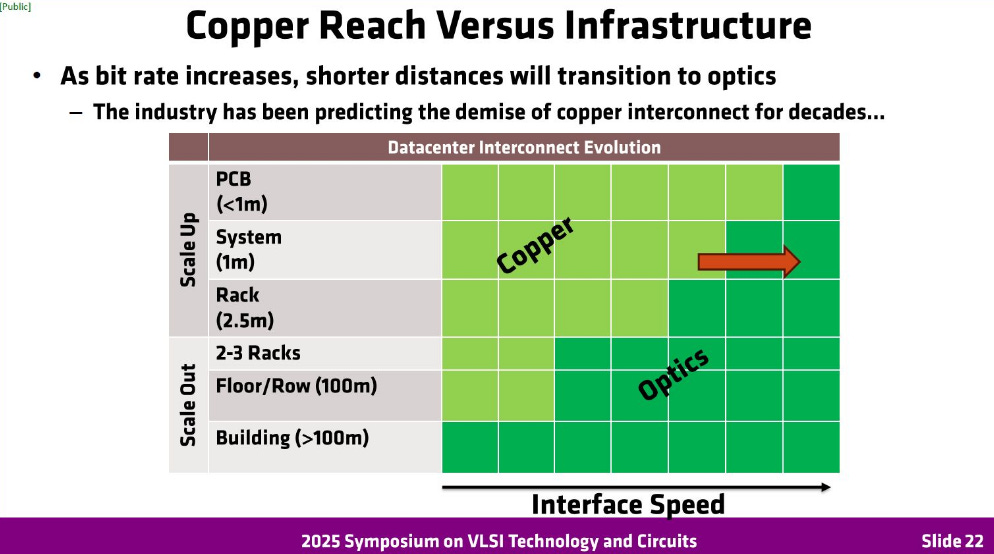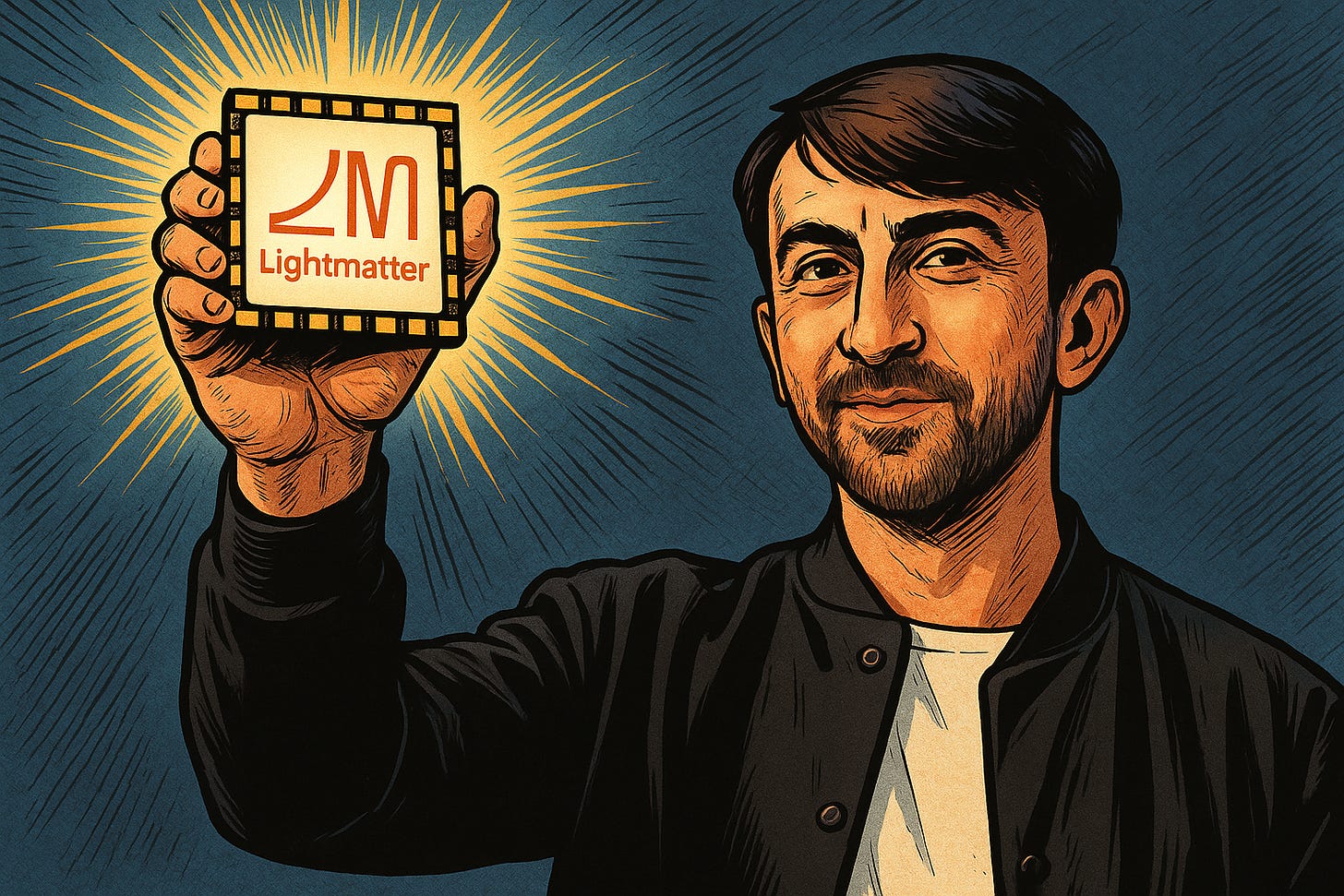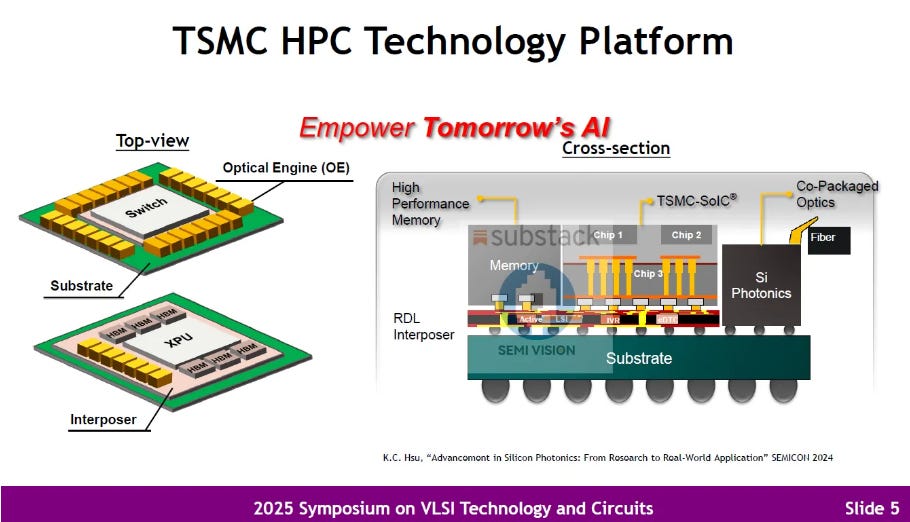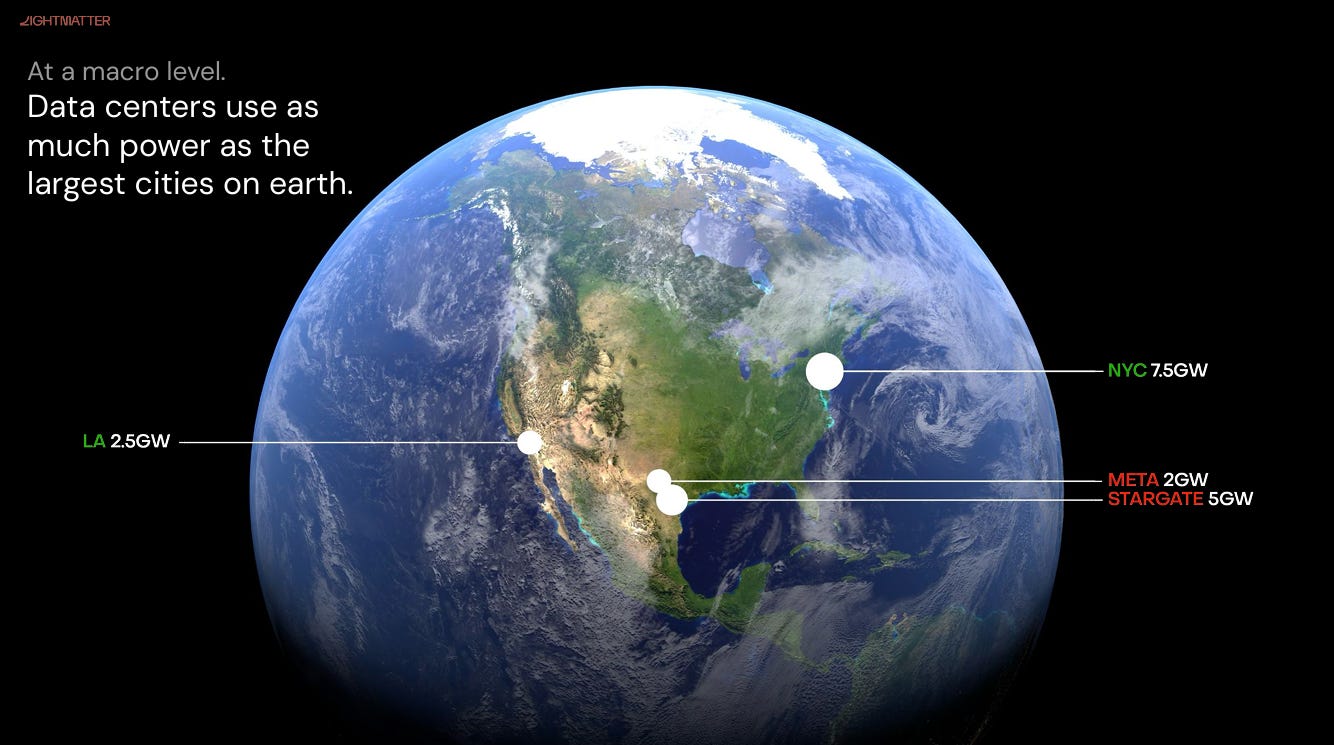Lightmatter: Transforming AI Infrastructure with the Power of 3D Photonics
Original Articles By SemiVision Research (Hotchip . Nvidia , Broadcom , Marvell , Lightmatter , Celestial AI , AyarLab ,Lightelligence)
The Hot Chips conference is about to begin, marking a pivotal moment in the evolution of AI infrastructure. As large-scale models continue to expand, the bottleneck in performance is shifting—away from the raw compute of individual processors and toward the interconnects and data movement that bind entire systems together. Traditional electrical interconnects are increasingly constrained in efficiency, latency, and scalability, struggling to keep pace with the demands of generative AI and ultra-large-scale training workloads.
Against this backdrop, the introduction of photonics is emerging as a core force driving the next generation of AI computing architectures. In particular, 3D photonic interconnects promise not only higher bandwidth density and lower power consumption, but also the ability to fundamentally redefine how processors and datacenters are linked at the architectural level.
Today, our attention turns to the latest advances from Lightmatter, a pioneer in photonic computing and photonic interconnects. At this year’s Hot Chips, the company will deliver a keynote presentation:
“Transforming AI Infrastructure with the Power of 3D Photonics.”
This topic extends far beyond a single technological breakthrough—it is intimately tied to the future of the entire AI ecosystem. How can datacenters operate with the efficiency of a unified supercomputer? How can compute performance continue to scale even as power consumption rises relentlessly? 3D photonic interconnects may hold one of the most promising answers.
Nick Harris
Founder and CEO of Lightmatter
Title: Transforming AI Infrastructure with the Power of 3D Photonics
Abstract:
3D photonics’ edgeless I/O paradigm overcomes the reach and bandwidth limits of traditional interconnects, linking thousands of GPUs with unprecedented scale-up throughput and energy efficiency. This talk will unpack the enabling technologies—silicon photonics integration, 3D packaging and high-density laser arrays—that make faster, more efficient AI model training and next-generation data-center architectures possible.
Biography:
Nick Harris is the founder and CEO of Lightmatter, a pioneering photonic-computing company that is redefining AI infrastructure. An MIT-trained engineer and scientist, he won the MIT Technology Review’s TR35 award and holds numerous patents on revolutionary photonic technologies. His prolific research—published in top-tier journals such as Nature—has seeded new fields in photonic AI interconnects, processor design, and quantum computing. Under his leadership, Lightmatter has introduced the world’s fastest AI interconnects and set the industry benchmark for energy-efficient, high-performance 3D photonics, shaping the future of computing.

In the rapid evolution of AI infrastructure, optical interconnection has emerged as a core technology to overcome the limitations of traditional electrical interconnects. As large-scale models demand ever-higher bandwidth, lower latency, and greater energy efficiency, a new wave of startups and pioneering companies focused on photonics is rising—driving efforts to reshape the network architectures of data centers and high-performance computing.
Among them, Lightmatter leads the industry with its Passage 3D photonic interconnect platform, featuring high-density DWDM transmission and co-packaged optics (CPO) solutions. Celestial AI, on the other hand, leverages its Photonic Fabric technology to decouple memory from compute, enhancing the scalability of AI clusters. Ayar Labs focuses on photonic I/O to replace traditional SerDes, delivering more efficient interconnects between servers and GPUs. Meanwhile, Lightelligence combines photonic computing with interconnect technologies in an attempt to build an end-to-end optoelectronic acceleration platform.
Together, these companies form the core camp of photonic interconnect innovators. They are not only pushing forward the technologies that will power the next generation of AI computing, but also demonstrating diverse pathways through which data centers may transition from electricity to light.
This wave of photonic transformation is not merely an incremental upgrade in transmission technology, but rather a profound dual revolution in both computation and interconnect. Traditional Moore’s Law scaling and transistor miniaturization can no longer sustain the energy-efficiency demands of AI infrastructure on their own; the next breakthrough lies in system-level designs that fuse photonics and electronics.
The introduction of photonic interconnects not only alleviates the bandwidth bottlenecks between GPUs, CPUs, and specialized accelerators, but also triggers a complete reconfiguration of advanced packaging, memory architecture, network protocols, and data center topology. From on-chip photonic I/O to optical switching across racks and even entire facilities, the AI compute chain is rapidly converging toward a design paradigm centered on light.
This also means that future competition will no longer be defined by hardware specifications alone, but by who can first establish a holistic photonic platform that integrates hardware, software, and ecosystem support. Lightmatter is advancing this vision with its dual-engine strategy of Passage (interconnect) and Envise (compute); Celestial AI targets memory disaggregation through its Photonic Fabric; Ayar Labs and Lightelligence pursue I/O and photonic acceleration respectively. While each company follows a different path, they all point toward the same trend—the transition of data centers from electrical to photonic architectures.
On the stage of Hot Chips, these forward-looking concepts represent more than technical showcases; they signal the direction of the entire industry. For those tracking the future of AI, this “photonics revolution” is not only about faster GPU links or larger model scales—it is ultimately about whether AI can continue to expand under the dual constraints of energy and cost.
For Paid Members, SemiVision will discuss topics on
Lightmatter
Celestial AI
Ayar Labs
Lightelligence
Lightmatter: Using Photonic Computing to Address the AI Energy Crisis
The Story of Lightmatter: A Photonic Journey from MIT Labs to the Future of AI
Spotlight on Lightmatter: The Three Core Products—Passage, Envise, and Idiom
Passage: The Optical Interconnect Platform
Envise: The Photonic AI Accelerator
Idiom: The Photonic Computing Software Platform
Lightmatter’s Dual-Engine Strategy
Lightmatter : Market Landscape
1. Data Centers — Reducing Energy, Enhancing Scalability
2. AI Technology Companies — Tackling Compute Bottlenecks in Vertical Domains
3. Cloud Service Providers — Breaking Traditional Networking Bottlenecks
Competitive Landscape: NVIDIA, Broadcom, Marvell vs. Lightmatter
Lightmatter’s Differentiation
Market Size in Global AI Product and Service Market
AI Market Outlook & Lightmatter’s Challenges
Competitors in Photonic Compute & Interconnect (Celestial AI / Ayar Labs )
Competition from Traditional Semiconductor Giants (NVIDIA / Cerebras Systems )
Lightmatter’s Position
Business Model in Lightmatter
Strategic Outlook
Quantum and Photonics Funding Boom
Key Opportunities
Key Risks
Lightmatter’s Core Opportunities vs. Challenges
Silicon Photonics Integration: PIC and EIC Synergy
Architectural Impact: Radix Expansion & Topology Optimization












